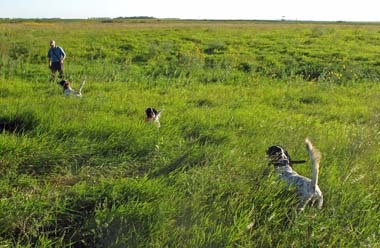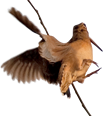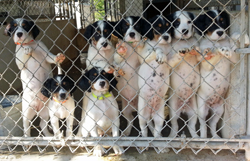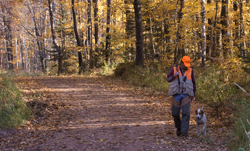Transition to wild birds

In our gun dog foundation training, we use pigeons in launchers to teach dogs about birds and how to act around them. We need control of the bird to create the necessary training situations. That control gives us better timing and helps instill the desired behavior.
But since the goal is not to have the best pigeon dogs around, we eventually need to transition to wild birds.
While a dog may be finished on pigeons in two or three months, it will take at least that long and much more effort to finish it on wild birds. There are three reasons.
We lose the ability to control the bird.
This creates a whole new set of conditions for us. Since we don’t know when or how the bird will flush, we have to focus intently on everything going on to react and to properly correct the dog.
The level of distraction is much higher.
The locations and terrain are different. The dog is more excited and less focused on us. (Wild birds are much more stimulating to the dog.) The sessions are longer which may cause the dog to be hot and/or tired.
The number of bird contacts changes.
The dog can only progress when it finds a bird. As trainers, knowing where the birds are is critical. Consistent bird contact creates consistent opportunities for learning.
Key points to remember.
• Progress in wild bird training depends on the foundation created during pigeon training. If your dog isn’t performing well in training situations, it’s not ready to move on.
• Expect your dog to do things wrong on wild birds. Give it some freedom to learn from mistakes. Don’t correct too hard or too fast. Look for progress not perfection.
• More birds are not always better. Dogs learn by repetition and consistent bird contact over a longer period will provide those repetitions.
• Some dogs can take a lot of pressure and the finishing will go quickly. Others must be handled more delicately. Read your dog.
• Timing is everything. The dog must understand why it was corrected. If your timing is good, much progress can be made in a few encounters.
• Dogs are place oriented. They learn to respond to certain stimulus in the training field, but it will take repetition to generalize that behavior on wild birds.
• Dogs constantly read our body language. We, too, act differently in situations involving wild birds.
Finishing your dog on wild birds will take time. But the results of that effort will reward you with many years of satisfaction and pride.




